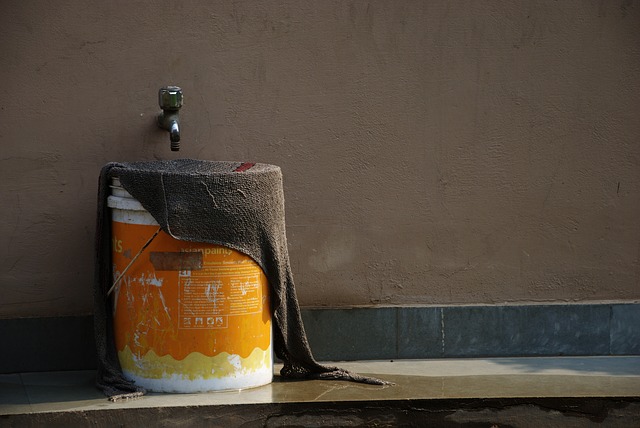There’s rarely a slow day or night for the owner or property manager of a commercial building. Beyond the baseline of keeping the lights on and making sure the trash gets taken out, there’s an infinite amount of work competing for your attention. From arranging for landscaping to installing that new whiteboard the Sales Department requested, there’s a lot to consider.
In that mix, your building’s piping could get overlooked—a common mistake that can lead to problems. In this article, we’ll explain why.
Never put off a problem until tomorrow
As any veteran building owner or facilities manager can tell you, procrastination is the enemy. No matter how busy your schedule is, make a habit of dealing with any leaking piping problems in your building immediately. There’s just too much at stake when it comes to pipe problems. Consider the following scenarios:
- Over the weekend, the building’s heating system went offline, and your pipes froze. No one is in the office, so you decide to let the pipes thaw out once the heat is back on. You return Monday to a flooded office, as one of the pipes has burst. You’re now looking at a major mess.

- You have a water leak that’s only a small drip from the ceiling in the corner of a building. You put a bucket under it and move on to seemingly more pressing issues. You return the next day to find that the bucket has overfilled, and water is now all over the floor—a major safety hazard and liability risk. In addition, there’s a new leak dripping from the ceiling onto one of the computers in the office. That computer is ruined and will need to be replaced. You’re now facing an expensive and time-consuming problem.
In both of these scenarios, the building owner or manager should have called a locally trusted HVAC company to have them come out, inspect the problem, and recommend a course of action. You also typically can’t go wrong with turning off the water at the first sign of trouble. We recommend that you establish a working relationship with a 24/7 HVAC company in your area, so that you don’t have to decide who to call in the middle of an HVAC emergency.
Establish a maintenance checklist
It goes without saying, but a commercial building is vastly more complex than a house. A home piping checklist typically just includes fixing things when they go wrong. Your business’ building, on the other hand, has to consider the following:
- High traffic: The bathrooms, kitchens, and showers (if your building has a gym) of your commercial building see far more users than those in the average home. That means more wear-and-tear and more opportunities for things to go wrong, from the extreme (pipe blockages) to the mundane (clogged sinks).
- More systems: More pipes, more problems. The sheer scale of a commercial building and its network of pipes means that more can go wrong, both in the short-term (think about a sewer line obstruction caused by construction outside the building) and over the longer haul (the accumulation of grease from a work kitchen inside of pipes builds up faster in a commercial setting than a residential context).
To take care of your pipes, set up a maintenance calendar and schedule. This checklist should include everything from replacing worn faucets and fixtures to making sure the emergency water shutoff works properly.
Establish agreements with professional HVAC provider
Don’t forget to address related items that could impact your pipes: in the example earlier, it was a malfunctioning heating system that led to the building’s pipes freezing. A commercial heating system tune-up from a local HVAC company might have prevented that heating breakdown, which in turn would have prevented the frozen pipes. Check out the benefits of an HVAC Preventive Maintenance Plan.
Encourage good plumbing behavior
This one is less of a checklist item and more of an everyday reminder: no amount of plumbing upkeep and maintenance can compensate for poor behavior. Most plumbing problems in commercial buildings of any size or type are caused by employees or customers. From flushing trash down the toilets to emptying grease into sink drains in your office kitchen, major blockages or pipe problems can result from human interaction with the building.
Our advice? Establish a culture of plumbing responsibility in your building. Communicate with your employees about what they can do to keep your pipes in good shape. In many cases, bad behavior isn’t malicious, but instead stems from ignorance. After all, for your employees, this is their place of daily work: they have an ownership stake in making sure the bathrooms and kitchen areas remain open for them to use.
Getting customers or visitors to do the same may be more difficult. We recommend putting up signs in your bathrooms that ask customers not to put trash down the toilets. Again, many problems here are simply caused by ignorance. Just politely asking people to do respect the building can go a long way to keeping your building’s pipes in good shape.
Get help when you need it
If there’s one takeaway from this article, make it this: don’t be afraid to enlist the help of specialists when you need it. This is true for any particular aspect of your business—electrical, HVAC, indoor air quality, and pipe and plumbing problems. You’ll not only cut down your workload as the building manager, but you’ll also be able to rest easy knowing the problem was dealt with the right way.
Article AuthorVictoria Schmidt is the communications specialist at Southern Air Heating and Cooling South Louisiana, the go-to plumbing & HVAC contractor in South Louisiana. At Southern Air, we believe in backing our work with our Ironclad Guarantees. These guarantees ensure that our customers are completely satisfied with our products and services, and they’re peace of mind.
